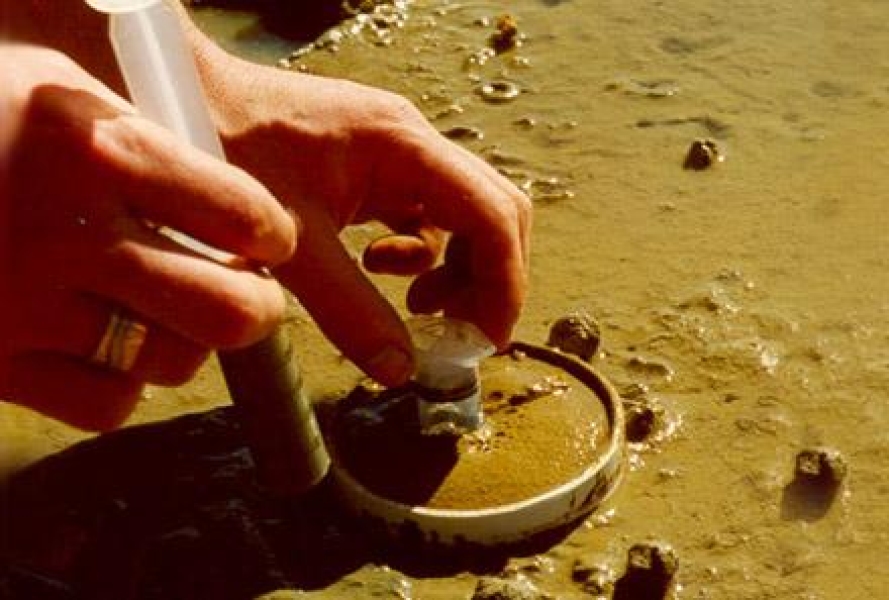Quorer: a simple method for estimating deposited fine sediment.
The quantity and nature of deposited fine sediment (i.e., particles < 2mm) on streambeds is often indicative of land management practices, such as forest harvest, livestock activity, and mining. The biological implications of increased levels of deposited fine sediment are usually negative, because deposited fine sediments have the potential to smother the streambed.
For many years we have used a simple technique for measuring the amount of fine sediment held within the interstitial spaces of the streambed. The quorer (Quinn corer) utilises an open-ended cylinder that isolates an area of gravel substrates in flowing water, typically in places corresponding to sites suitable for macroinvertebrate sampling (i.e., runs or riffles). After measuring the water depth within the cylinder, the top 5–10 cm of substrate is vigorously disturbed with a stirring rod, and a grab sample of the resulting slurry collected and analysed for the content of organic and inorganic sediments. The quantity of suspendable sediment in the surficial substrate (top 5–10 cm) can then be calculated.
The principal advantage of the quorer technique is that it provides a simple, quantitative, measure of suspendable sediment collected from the actual habitat of the organisms the deposited sediment is likely to impact (e.g. benthic invertebrates, salmonid eggs). The technique is useful in AEE investigations, consent monitoring, and state-of-the-environment monitoring, particularly where there are concerns about increased delivery of fine sediments to streams (e.g., forest logging, placer mining, road and bridge construction). Research on the utility of the method and correlations with biological patterns is on-going.
Field and laboratory protocol for quorer

